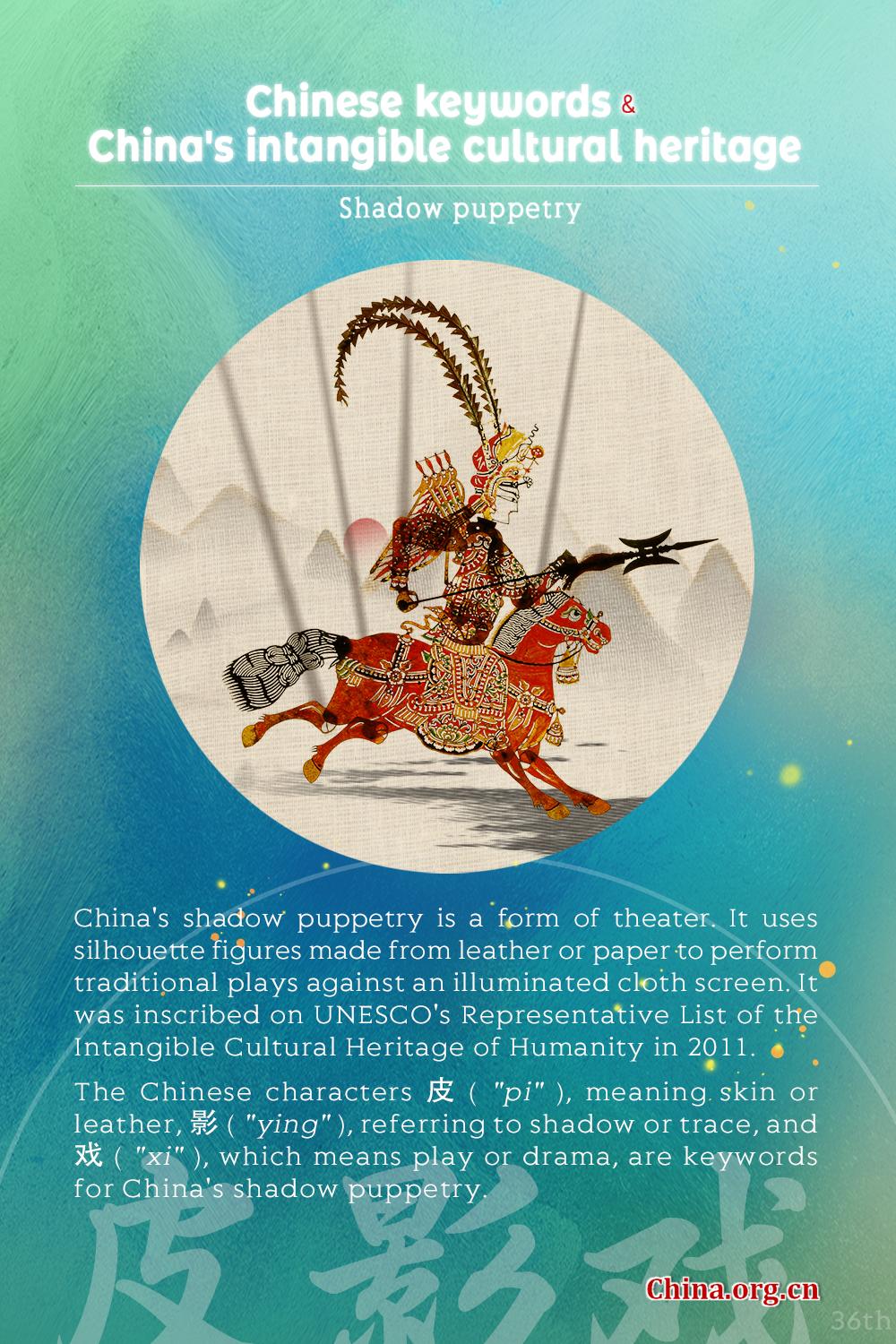Shadow puppetry and its Chinese keywords
- By Zhou Jing
 0 Comment(s)
0 Comment(s) Print
Print E-mail China.org.cn, September 20, 2023
E-mail China.org.cn, September 20, 2023
Editor's note: China's shadow puppetry is a form of theater. It uses silhouette figures made from leather or paper to perform traditional plays against an illuminated cloth screen. It was inscribed on UNESCO's Representative List of the Intangible Cultural Heritage of Humanity in 2011.

The Chinese characters 皮 ("pi"), meaning skin or leather, 影 ("ying"), referring to shadow or trace, and 戲 ("xi"), which means play or drama, are keywords for China's shadow puppetry.
Chinese shadow puppetry traces its roots back more than 2,000 years to the Western Han Dynasty (202 B.C.- 25 A.D.) in the Yellow River region and reached its zenith during the Qing Dynasty (1644-1911). It was introduced to West Asia and Europe during the Yuan Dynasty (1271-1368).
At its peak, professional shadow play troupes abounded, and countless smaller groups formed by families or individuals contributed to about 30 renowned genres. Wealthy and influential families often demonstrated their social status by hiring large and prominent shadow play troupes for religious rituals, weddings, funerals, other special occasions, or simply for entertainment.
Most shadow puppetry plays demand high-standard hand techniques from performers, as well as musical ability. Veteran artists usually master specialized techniques such as improvisational singing, falsetto, simultaneous manipulation of several puppets, and proficiency in various musical instruments.
Many performers also carve the puppets, which typically have more than 10 or even 20 moveable joints. Chinese shadow puppets are usually made of donkey, cow, or sheep leather. The entire production process involves over 10 steps, each requiring meticulous attention to ensure the puppet's safe preservation.
Like other folk arts, shadow puppetry's evolution is closely intertwined with life and culture. Some puppetry plays are based on legends and fairy tales, while others reflect historical narratives and memories. The development of shadow puppetry has incorporated local melodies, thereby producing diversified regional styles.
As UNESCO notes, Chinese shadow puppetry "passes on information such as cultural history, social beliefs, oral traditions and local customs. It spreads knowledge, promotes cultural values, and entertains the community, especially the youth."
Today, Chinese authorities and communities at various levels continue to implement multiple measures to protect shadow puppetry. These measures include supporting inheritors, collecting play scripts, digitizing traditional performances, and preserving props and musical instruments, among other efforts.
Find out more about China's intangible cultural heritage and their keywords:
China's 43rd UNESCO's ICH element: Traditional tea processing
China's 42nd UNESCO's ICH element: Wangchuan ceremony
China's 41st UNESCO's ICH element: Taijiquan
China's 40th UNESCO's ICH element: Lum medicinal bathing of Sowa Rigpa
China's 39th UNESCO's ICH element: Twenty-Four Solar Terms
China's 38th UNESCO's ICH element: Abacus-based Zhusuan
China's 37th UNESCO's ICH element: Training plan for Fujian puppetry performers




